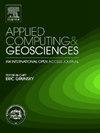Stacking modeling with genetic algorithm-based hyperparameter tuning for uniaxial compressive strength prediction
IF 3.2
Q2 COMPUTER SCIENCE, INTERDISCIPLINARY APPLICATIONS
引用次数: 0
Abstract
Measuring rock strength using an uniaxial testing machine is destructive and costly, requiring high-quality rock samples. This work suggests an alternate approach that makes use of machine learning techniques to predict uniaxial compressive strength (UCS). The input parameters for this investigation were derived from 180 datasets containing well log variables such as resistivity (RT), sonic travel time (DT), and gamma-ray (GR), as well as rock properties like density. All these datasets came from a shaly sand reservoir in the Bengal Basin. To forecast UCS, a number of methods were used, such as multilayer perceptron (MLP), random forest (RF), support vector machine (SVM), extreme gradient boosting (XGBoost), and multiple variable regression (MVR). Additionally, a hybrid stacking model that combines these algorithms was developed. Hyperparameter optimization was conducted using grid search and genetic algorithm. A notable contribution of this study lies in the application of both grid search and genetic algorithm (GA) for hyperparameter optimization, implemented across both individual base learners and the stacking ensemble model. Regression metrics including coefficient of determination (R2), mean absolute error (MAE), root mean square error (RMSE), maximum error (MaxE), and minimum error (MinE) were used to assess the effectiveness of the models. The proposed stacking model achieved a high testing R2 of 0.9762, outperforming individual models. The methodology provided in this paper can assist engineers and researchers in quickly and precisely determining the strength of reservoir rock by using a few log features, hence decreasing the reliance on labor-intensive and time-consuming laboratory work.
基于遗传算法的单轴抗压强度预测超参数调整叠加建模
使用单轴试验机测量岩石强度具有破坏性且成本高昂,需要高质量的岩石样品。这项工作提出了一种替代方法,即利用机器学习技术来预测单轴抗压强度(UCS)。该研究的输入参数来自180个数据集,其中包含电阻率(RT)、声波传播时间(DT)、伽马射线(GR)等测井变量,以及密度等岩石属性。所有这些数据集都来自孟加拉盆地的一个泥质砂储层。为了预测UCS,使用了多种方法,如多层感知器(MLP)、随机森林(RF)、支持向量机(SVM)、极端梯度增强(XGBoost)和多变量回归(MVR)。在此基础上,提出了一种结合上述算法的混合叠加模型。采用网格搜索和遗传算法进行超参数优化。本研究的一个显著贡献在于应用网格搜索和遗传算法(GA)进行超参数优化,在个体基础学习器和堆叠集成模型上实现。采用决定系数(R2)、平均绝对误差(MAE)、均方根误差(RMSE)、最大误差(MaxE)和最小误差(MinE)等回归指标评估模型的有效性。提出的叠加模型的检验R2为0.9762,优于单个模型。本文提供的方法可以帮助工程师和研究人员通过使用几个测井特征快速准确地确定储层岩石的强度,从而减少对劳动密集型和耗时的实验室工作的依赖。
本文章由计算机程序翻译,如有差异,请以英文原文为准。
求助全文
约1分钟内获得全文
求助全文
来源期刊

Applied Computing and Geosciences
Computer Science-General Computer Science
CiteScore
5.50
自引率
0.00%
发文量
23
审稿时长
5 weeks
 求助内容:
求助内容: 应助结果提醒方式:
应助结果提醒方式:


